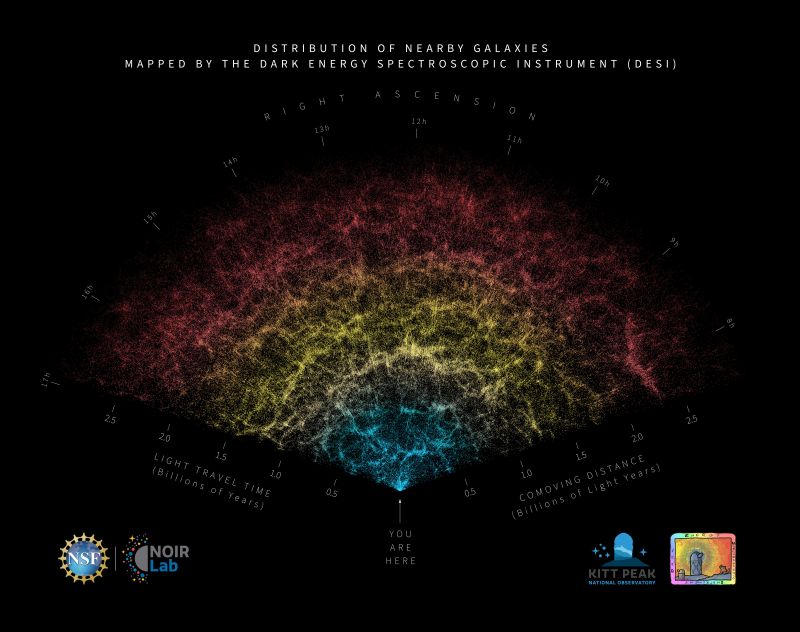Researchers have measured the expansion history of the universe with the highest precision ever, providing a more detailed look at the nature of dark energy and its effect on the universe.
The results are from an analysis of spectra of galaxies and quasars recorded by the Dark Energy Spectroscopic Instrument (DESI). The data is from the first year of a five-year survey which will be used to create the largest 3D map of the universe ever made.
"This project is addressing some of the biggest questions in astronomy, like the nature of the mysterious dark energy that drives the expansion of the Universe," says Chris Davis, program director for NSF NOIRLab.
DESI is an international collaboration of more than 900 researchers from over 70 institutions around the world. The instrument is mounted on the NSF Nicholas U. Mayall 4-meter Telescope at Kitt Peak National Observatory. The DESI project is managed by the U.S. Department of Energy's Lawrence Berkeley National Laboratory and funded by the DOE Office of Science.

, the researchers presented their analysis on April 4. They report that they have measured the universe's expansion history over the last 11 billion years with a precision better than 1%. Those measurements confirm basic aspects of the leading model of the universe's structure and expansion, while also uncovering areas to explore with upcoming data.

While the expansion history of the universe may be more complex than previously thought, confirmation must await the completion of the five-year DESI project which aims to map over 3 million quasars and 37 million galaxies. As more data are released, researchers will further improve their results.






